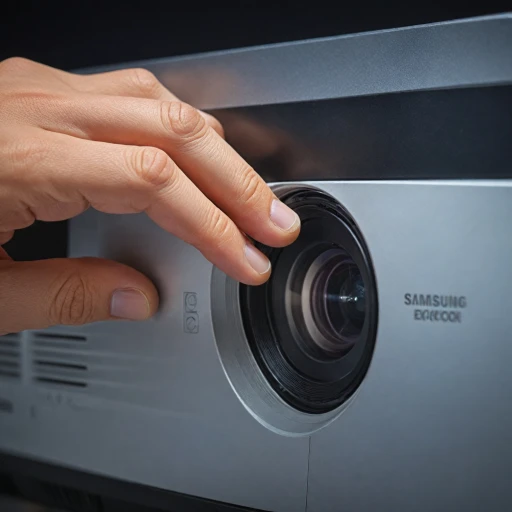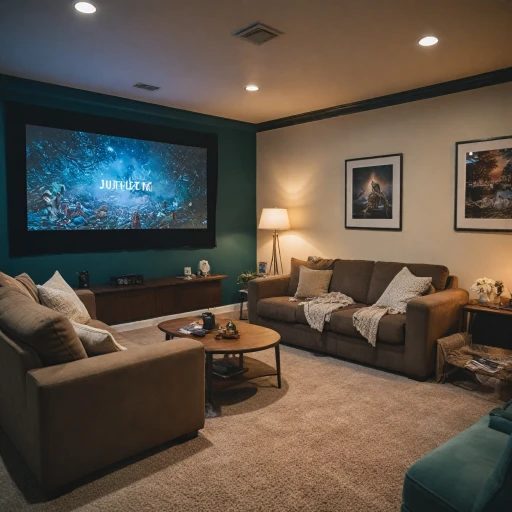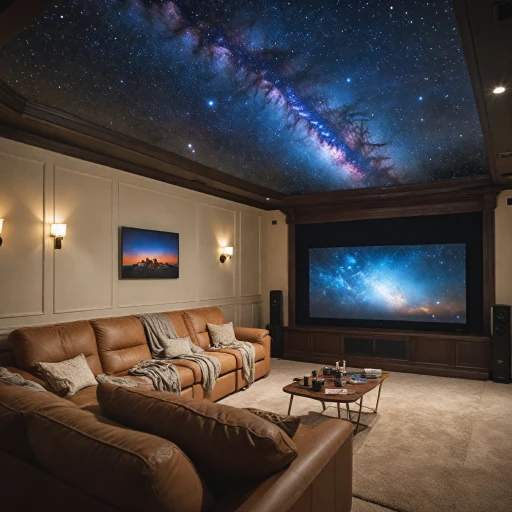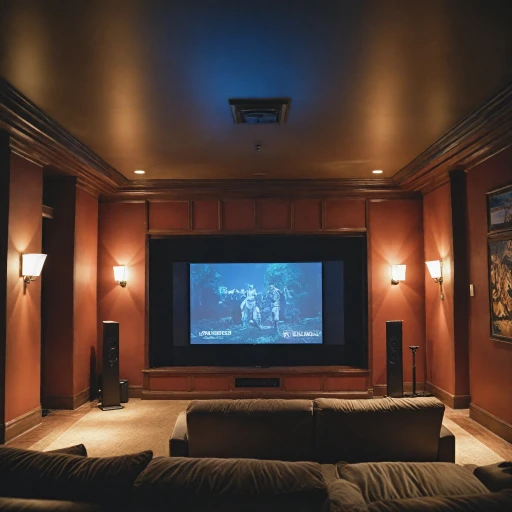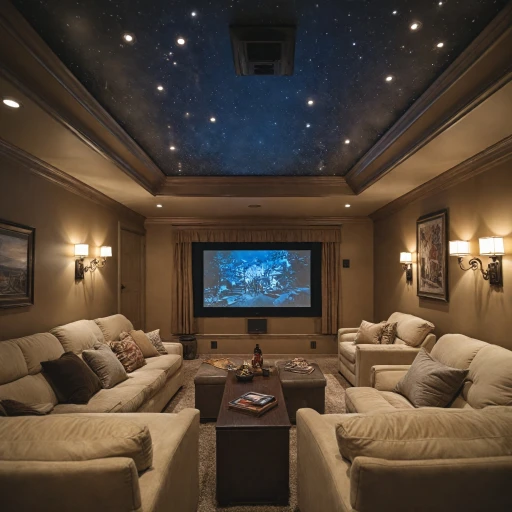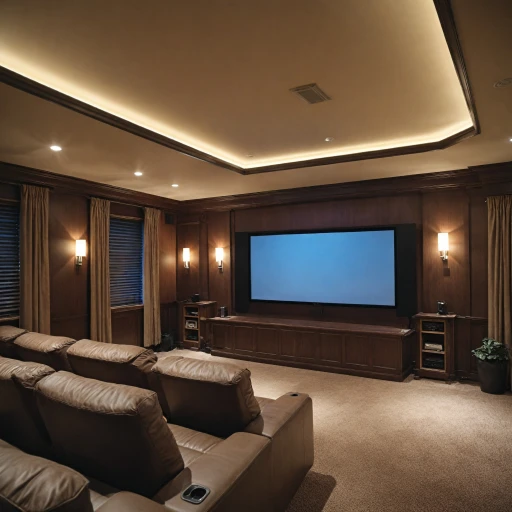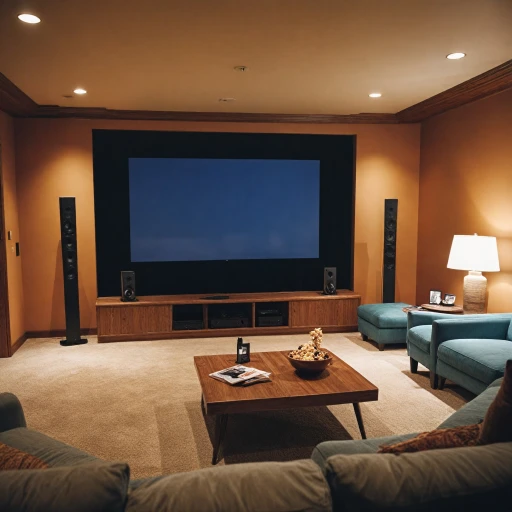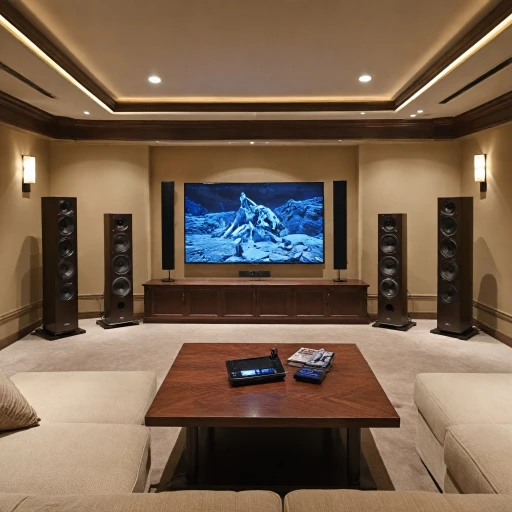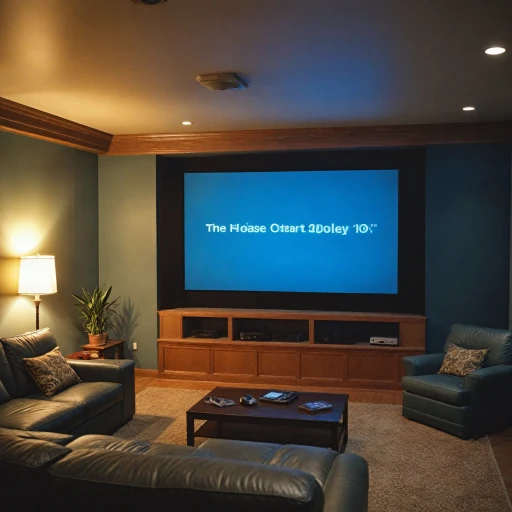
Understanding the Importance of Cable Management
Recognizing Why Cable Management Matters
In the realm of home theaters, cable management is no mere afterthought. Imagine transforming your living space into a dynamic entertainment hub, yet being confronted daily by chaotic tangles of cables. Proper cable management is crucial for several reasons, including both aesthetics and safety.
Unsightly cords and cables detract from the visual appeal of any setup. They not only clutter your space, but also present tripping hazards, which can lead to potential accidents. Furthermore, disorganized cables can make identifying connections difficult, ultimately complicating any change or upgrade in your setup, whether involving an entertainment space upgrade or adding new devices.
A coherent cable management system helps prevent interference and enhances the longevity of your electronic components by preventing undue strain on cables and connectors. This attention to detail preserves the quality performance of audio video devices, maintaining clear signals free of static or interruptions.
Integrating systems such as floor raceways or cable raceways can streamline this process, keeping cords and connectors well-organized and tucked out of sight. Subsequent sections will explore the variety of raceway options, their installation techniques, and methods for maintaining a seamless and effective cable management system.
What is a Floor Cable Raceway?
What Exactly is a Floor Cable Raceway?
Understanding a floor cable raceway is pivotal when aiming for effective cable management in your home theater setup. A cable raceway is essentially a channel designed to neatly house and conceal your audio-video and power cables, ensuring an organized, clutter-free environment. Floor cable raceways, specifically, are tailored to safeguard wires running along floors, allowing for seamless incorporation into your media space. Using floor raceways helps to prevent tripping hazards that might arise due to loose cables spread across the floor. They efficiently encompass cables such as power cords, extension cords, or even wire cables for your AV devices, keeping them out of sight and mind.The Structure of Floor Cable Raceways
Floor cable raceways typically come with several components and fittings such as connectors, covers, and mounting accessories, allowing easy customization based on your room layout. Some systems are designated as wiremold OFR, offering a low-profile design perfect for tight spaces or where aesthetic appeal is crucial. When considering a floor raceway system, it’s worthwhile to explore options like outlet boxes or floor boxes, which facilitate neat and accessible connections for your electronic devices. From series of gang boxes to installation fittings, these elements ensure the cables are anchored securely, thus enhancing the room's safety and sophistication. For those looking to enhance their entertainment setup further, you might find inspiration in a pop-up movie theater experience. This concept utilizes innovative solutions including floor cord management to create versatile and engaging home theater environments. Utilizing a floor cable raceway not only improves the visual appeal of your space but also assists in extending the lifespan of your cables by reducing wear and tear, and improving accessibility for maintenance purposes.Choosing the Right Floor Cable Raceway for Your Home Theater
Selecting Optimal Solutions for Superior Cable Management
In the pursuit of an immaculate home theater setup, choosing the perfect floor cable raceway can significantly enhance the aesthetics and functionality of your space. A good cable management system should neatly organize both the audio video cables and the power cords required by your entertainment devices. Here are some key factors to consider in selecting the right raceway:
- Material and Durability: Cable raceways need to be sturdy enough to withstand foot traffic and general wear. Materials such as PVC are common for their durability and lightweight properties.
- Size and Capacity: Evaluate how many cables you'll need to accommodate. A low profile raceway might suit lightweight applications, while larger systems might be required for multiple wires and cords.
- Design and Aesthetics: The raceway should blend seamlessly with your room’s decor. Floor cable covers come in various colors and finishes to complement your interior design.
- Types of Connections: For homes that have numerous devices and accessories, consider raceways that provide room for fittings and connectors to ensure that everything stays securely in place.
- Ease of Installation: Look for solutions that offer straightforward installation processes, such as self-adhesive backs or clip-in systems. Easy installation helps avoid unnecessary complications.
- Integration with Existing Systems: If you have existing solutions, compatibility with outlet boxes, floor box accessories, or even extension cords can be highly beneficial.
A comprehensive understanding of these factors will assist in ensuring your home theater's cable management is both functional and stylish. For further insights, you may want to explore options within the OFR series, designed specifically for seamless integration with various home theater components.
Installation Tips for Floor Cable Raceways
Step-by-Step Guide for Effective Installation
For those looking to manage cables efficiently in their home theater setup, the installation of floor cable raceways can seem daunting, but with the right approach, it can be made considerably more manageable. Here, we'll break down the process into clear steps and provide tips to ensure a clean and clutter-free space.- Plan Your Layout: Before laying down any raceways, assess your room. Determine the path your cables need to take from the devices to the power and audio video connections. Map out where each raceway, box, or outlet box will sit, accounting for things like OFR series cords and extension cords that power various gadgets.
- Measure and Cut: Once you have your layout, measure the length of each raceway. Many installations will require adjustments, so having a few basic tools—such as a saw to cut the raceway to size—will come in handy. Don't forget to include fittings and connectors to join sections together where necessary.
- Prepare the Surface: For a secure fit, ensure the floor is clean and dry. Clear away any furniture or obstacles. This is essential for the raceway covers to adhere properly and for a low profile finish that won't disrupt the aesthetics of your home theater.
- Install and Secure: Start by laying down the raceway and securing it with mounting accessories included in your cable management kit. Most floor raceways have adhesive backing, but additional screws can provide extra stability. If using a floor box, ensure it sits flush with the surface to prevent tripping hazards.
- Organize and Insert Cables: Thread your cables through the raceways, starting with the larger cords like wire cables and working down to smaller audio video wires. This helps simplify organization and avoids overcrowding an individual raceway.
- Close with Covers: Once all cables are inserted, secure the raceways with covers. If you have used floor cord covers, ensure they lock properly as part of your cable management systems to maintain a seamless look.
Maintaining Your Cable Management System
Ensuring Your Cable Management System Stands the Test of Time
Maintaining the impeccable state of your cable management system is essential to ensure your home theater continues to function seamlessly. An efficiently managed system with well-organized cables not only enhances functionality but also contributes to the aesthetic appeal of the space. To achieve this, incorporating routine maintenance practices, along with utilizing the right floor cable raceway, make a significant difference. Start by conducting regular checks of your raceway and cable systems. Keep an eye out for any wear or damage to the cable covers, fittings, and connectors. A close look at the junctions where wires meet with outlet boxes and floor box setups is crucial to ensure they are securely fastened and free from any potential hazards. In case dust or debris accumulates, gently clean the raceway surfaces using a dry cloth. Avoid using liquid cleaners that can seep into the cable raceway and affect the wires or connectors. It’s also advisable to periodically inspect the route your cables take, ensuring that they have not become tangled or strained, which can lead to potential disconnections or damage over time. Remember, overloading your power systems with too many connected devices can strain the cables and lead to wear. When connecting multiple devices, such as in an audio video setup, focus on utilizing appropriate systems like low profile floor cord management solutions and wiremold ofr series that accommodate multiple lines seamlessly. Finally, be sure to re-evaluate your setup whenever you add or remove devices from your home theater system. Keeping your system flexible means you’re not only using the best methods for today but are also prepared for any future enhancements. By investing in quality outlet boxes, gang boxes, and ensuring the right installation of mounting accessories, you prolong the life of your cable setup. With these steps, you’ll ensure that all components of your floor raceways continue to function optimally, providing a neat and organized appearance for the long haul.Exploring Alternative Cable Management Solutions
Diversifying Your Cable Management Approach
While floor cable raceways are highly effective for organizing cables and maintaining a tidy home theater setup, there are other cable management solutions that can complement or serve as alternatives, depending on your specific needs.
- Wire Concealers: These often come in the form of adhesive strips or snap-on covers that can easily attach to walls or baseboards, effectively hiding wires out of sight whilst matching your decor.
- Under Carpet Wiring: Some spaces can benefit from running cables beneath carpets or rugs, offering an unobtrusive way to manage cords without the need for additional raceways or fittings.
- Advanced Outlet Solutions: Consider using outlet boxes with integrated cord management features. Floor boxes and low-profile floor cord solutions can streamline power distribution while keeping wires organized.
- Cable Sleeves: These fabric sleeves bundle multiple cords together, making sets of wires more manageable and visually appealing. They can be particularly useful behind media consoles or TV stands.
- Cord Reels and Organizers: Extension cords and power cables often create clutter. Using cord reels or compact organizers can help keep these wires coiled and stowed neatly.
Each of these solutions offers distinct advantages, and the best approach often includes a combination, tailored to address the unique layout of your home theater. By exploring these options, you can enhance your setup with minimal visual clutter and maximize the overall functionality of your technology and devices.


